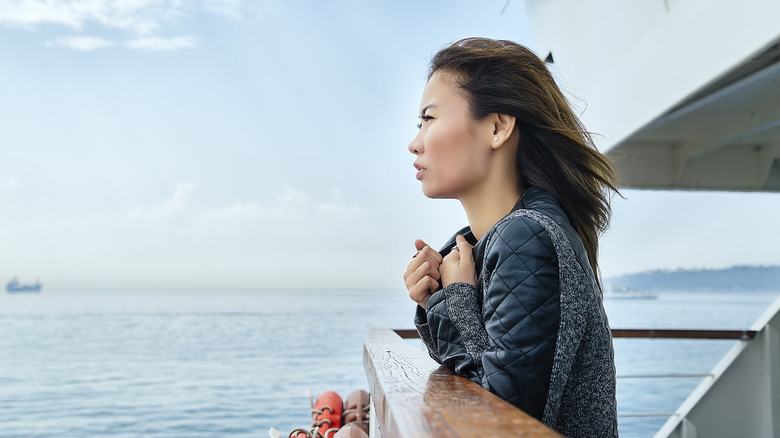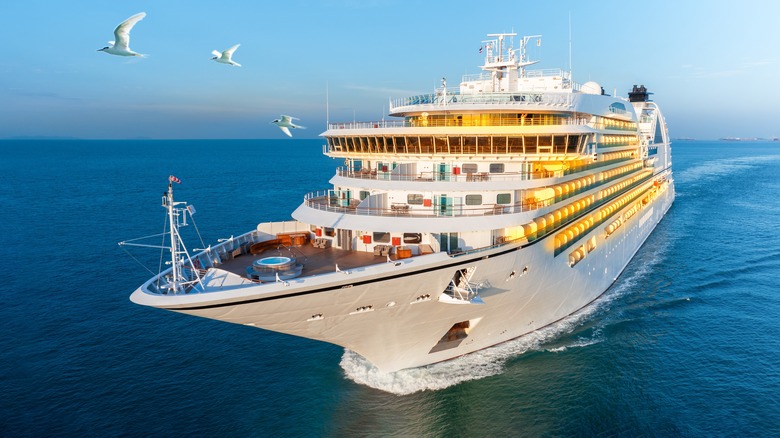Why You Shouldn't Worry About Your Cruise Ship Tipping Over On Your Next Voyage
If you think about it, cruise ships are the result of meticulous engineering and design. They're constructed to accommodate thousands of passengers, all while traversing through seas and oceans for extended periods, typically spanning days and weeks. They remain stable and upright despite the rough waves — a testament to how they were built with safety and stability in mind. If it's your first time hopping aboard a cruise ship, feeling anxious about your safety is understandable. You might harbor worry about feeling seasick, falling overboard, or the vessel itself tipping over.
Although rare, cruise ships can "technically" tip over. But will they? Highly unlikely. According to Harry Bolton, retired captain at the California Maritime Academy, a cruise ship could hypothetically tip if it were in "extreme weather," "positioned sideways," and rolled over by a 70 to 100-foot wave. "I guarantee you're never going to be in those kinds of waves anyway," he told CNN. "[Cruise ships] avoid bad weather like the plague. They don't want the passengers in peril, they don't want to risk any injury or accidents."
If a cruise ship potentially capsizing is what's holding you back from enjoying a cruise, it's important to understand that modern ships are built with the strongest materials and are designed to have a "low center of gravity," as noted by Reader's Digest. They also undergo meticulous testing and inspection before receiving the green light to embark on voyages.
Cruise ships are designed with safety in mind
A lot goes into building a single cruise ship — and by a lot, we mean hundreds and thousands of parts, hundreds of subcontractors and suppliers, and 1.5 million hours of physical labor, as detailed by NerdWallet. These vessels are carefully put together piece by piece, with the entire process often spanning 12 to 18 months. Involved in that construction is proper gravity management, which helps cruise ships remain stable and refrain from tipping over.
As noted by Interesting Engineering, the heaviest parts of the ship — like the machinery and engine — are in the bottom levels to keep the center of gravity low, which "helps counterbalance the weight pulling the ship downwards, effectively preventing it from tipping over." Additionally, ships have ballast tanks located at the bottom that are packed with water and are adjusted accordingly to help contribute to the vessel's stability. They also have robust warning systems, so the crew can take action immediately if they're at risk of capsizing.
To give passengers peace of mind, the Cruise Lines International Association assured that ships are constantly checked and inspected by various parties, including the International Maritime Organization and port authorities, to guarantee that safety regulations are consistently followed. As a result, the organization declared that cruise ships are "one of the safest ways to travel" and are "safer than virtually every other form of travel."

